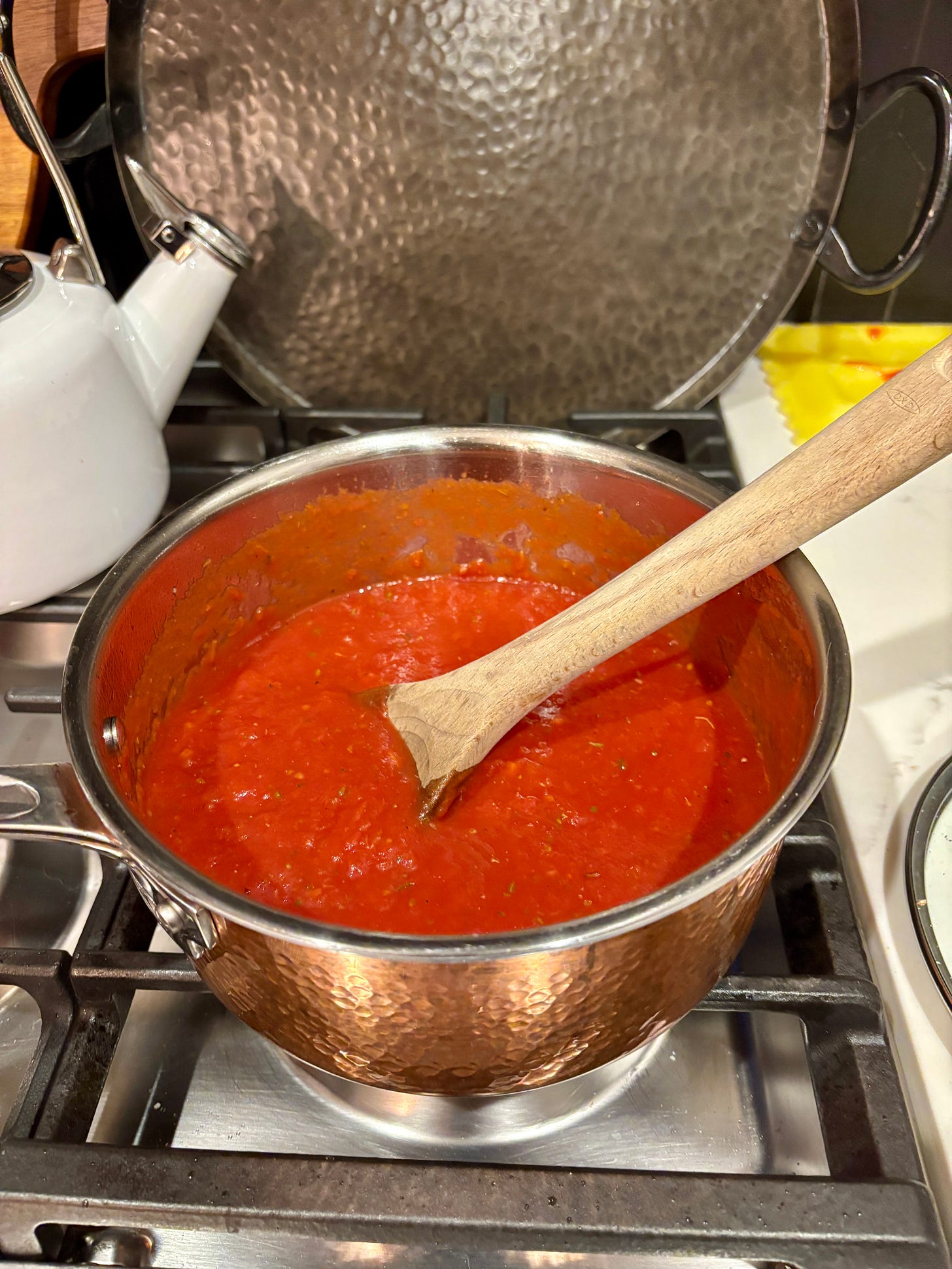Call it tomato sauce, marinara, or gravy — this sauce is a pillar of Italian-American cooking. (After all, it’s often simply described as “red sauce” Italian.) That said, this sauce has one problem: Everyone makes it a bit differently, and each cook often tweaks it as they go — adding a little of this, a pinch of that, as they stir it.
When I called my grandmother to ask her about her recipe, she laughed: “Oh, more of my made-up stuff?” That’s because while she does have a recipe written down (titled “Quick Tomato Sauce” in juxtaposition to her simmered-for-hours “Tomato Sauce”) she “used to make whatever [she] felt like, and with whatever [she] had.” And, to this day, when she serves us her quick tomato sauce, she does the same thing.

The recipe is simple, just some canned tomato puree (crushed tomatoes or tomato sauce can also be used) mixed with garlic, oregano, salt, black pepper, and parsley. But, she’ll also use Italian seasoning occasionally, which typically contains onion powder and basil. She usually buys Del Monte canned tomatoes, but admits she never sought out San Marzano or looked for a specific brand.
Obviously, this makes things difficult when you’re trying to recreate someone else’s sauce recipe. I’ve made this sauce more times than I can count, but it never tastes exactly like hers. However, I’ve begun to realize that may be inevitable, or even — maybe — a good thing.
I’ve experimented with fresh tomatoes, when my CSA box was loaded with Jersey-grown ones. I’ve used canned, whole peeled tomatoes, along with crushed. I’ve added fresh basil when I’ve had it, dropped in a minuscule pinch of sugar when the tomatoes seemed to still taste tinny, and added my signature: a pinch of red pepper flakes, for just a little heat.
Italians and Italian-Americans will argue over which version or additions are “authentic” — but, truth be told, we just like to argue. I think, when push comes to shove, we’d all agree that the most authentic version is the sauce that tastes the most like home. For some, that might be *gasp* a jarred marinara, and for others, that might mean the sauce made from tomatoes grown in their backyard garden.
For mine/my grandmother’s version, one thing is for sure: you need to cook it for at least 20-30 minutes. This is enough time for the tomatoes to sweeten and balance their acidity, while melding with the herbs and seasonings. You also need to stir it consistently — a sauce that sticks to the bottom of the pot is not going to taste good.
Arm workouts aside, the sauce comes together in just about the same time it’ll take for water to come to a boil and pasta to be al dente, so if you’re planning on spaghetti, start the sauce first. However, I usually prefer marinara in other dishes: eggplant parm, stuffed shells, baked ziti… the list goes on. Tasting as you go is key, because the measurements below are just suggestions after all.
Marinara Sauce
Makes ~ 4 cups of sauce, enough for 1lb of pasta
Ingredients:
1 tablespoon of olive oil
4 cloves of garlic, minced
1 28-ounce can tomato puree or crushed tomatoes
1 cup water
1 teaspoon Kosher salt
1 tablespoon dried oregano
½ teaspoon onion powder
¼ teaspoon dried parsley
Freshly ground black pepper, to taste
Optional: chopped fresh basil, crushed red pepper flakes
Directions:
In a saucepan over medium heat, heat the oil. Stir in garlic (if you want red pepper, toss it in now too) and saute until fragrant and just beginning to brown, about 30 seconds.
Add the can of tomatoes, then, fill the can with about 1 cup water. (This will get all the tomato out of the can’s crevices.) Pour into sauce.
Stir in the salt, oregano, onion powder, dried parsley, and black pepper.
Bring sauce to a gentle simmer, then turn the heat to low. Let cook for 20-30 minutes, stirring consistently, ensuring the sauce doesn’t stick.
Add in fresh basil just before serving, if desired.






